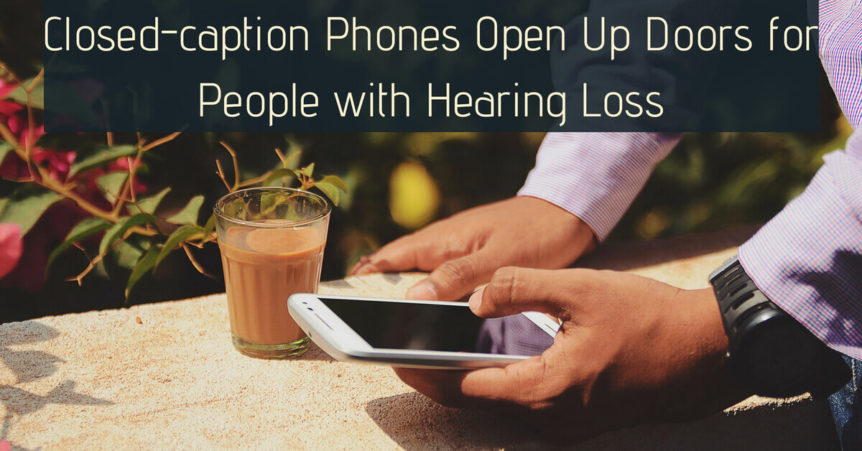In this day and age, cellphone technologies are faster, stronger, and more technically advanced. Our cellphones are at once smaller and more efficient, and larger and capable of incredible computing power. For people with hearing loss, however, cellphone technologies do not necessarily improve communication. People with untreated hearing loss and those with moderate to severe hearing loss can in fact be avoidant of using the phone altogether, preferring to rely on other people for their communication needs or simply isolating themselves from others altogether. Feelings of social isolation, and the feelings of depression and anxiety that often accompany isolation, can arise. But, just as cellphones are virtually ubiquitous, there is a resurgence of landline phones aimed at helping people whose hearing makes it difficult to use phones in general.
Captioned Telephone Technology
Captioned phones are devices that have built-in screens that almost immediately display the text of the conversation being had, making it possible with people with different hearing abilities to communicate over the phone. When a phone call is made, someone working at the Captioned Telephone Service (CTS) transcribes the incoming caller’s word and that text then appears on the captioned telephone screen. The CTS also uses advanced voice recognition technology to speed up the transcription process. Some captioned phones also operate over an internet connection rather than through phone lines.
There are some downsides to captioned telephones. Mainly, that there can be quite the delay between the incoming caller’s words and when they are transcribed and made available to the deaf or hard of hearing person on the other line. Advances in captioning technologies have however streamlined this process greatly over the past ten years. Other advances have also made it possible for more streamlined conversation itself. Whereas early technologies made it so that you were unable to interrupt or redirect the flow of conversation without severely compromising the transcriptionist’s abilities to do their job, the combinations of speech recognition technologies and advanced transcription technologies ensure more natural conversation flow between people.
Who Runs the CTS Service?
The CTS service is connected to the Telecommunications Relay Service (TRS), which is funded by the Americans with Disabilities Act (ADA). The ADA was passed in 1990, and meant that the government was obligated to provide a range of services and civil rights protections for people with disabilities. The ADA thereby made it possible for people with different hearing needs to have guaranteed access to telephone use, just as for people who are not hard of hearing. The CTS service is free of charge to those who are deaf or hard of hearing. While there is technically a person acting as a go-between for callers and deaf and hard of hearing people, and while there is a text record of the exchanges happening through CTS, the Federal Communications Commission (FCC) has ruled that all calls are strictly confidential.
The Different Options Available
There are many different kinds of captioned telephones and a variety of providers. These include ClearCaptions, CaptionCall, and CapTel. The devices are relatively inexpensive, and many people qualify for programs that provide captioned phones for free or reduced rates. The CaptionCall telephone is in fact free for people who have professionally certified hearing loss. You can begin the process of acquiring a closed caption telephone by checking with us at Neighborhood Hearing Aid Center, social services provider, or even general practitioner to learn about your options.
Once you receive your closed-captioned telephone, a professional will help to install the phone. This trainer will instruct you in how to use the phone, and will complete the paperwork that the FCC requires to be filled out (because the FCC pays for the closed caption phone). There is generally little to not setup—all you have to do is simply start making phone calls.
It might seem counterintuitive to begin using a closed-captioned telephone at home in a day and age when cellphones seemingly provide all the solutions to life’s problems. The widespread, easy access to video chatting has greatly improved the abilities of deaf and hard of hearing people to connect with friends and loved ones. For older adults and for people who simply do not want to be so attached to cellular devices, having a phone in the home is a wonderful option.

